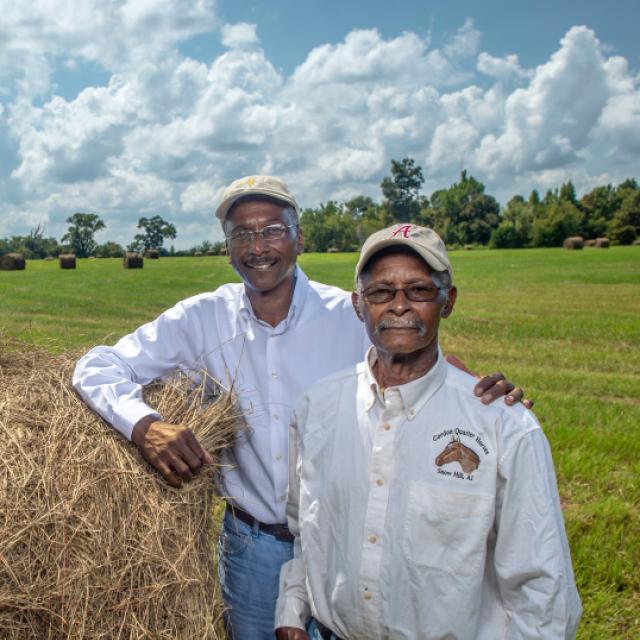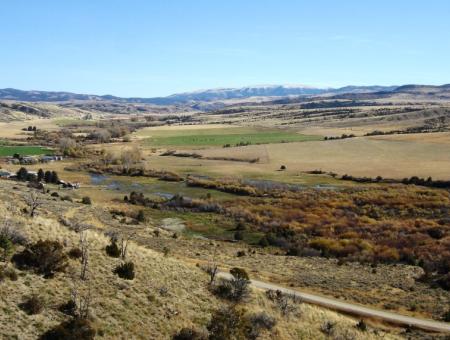Montana Programs and Application Dates
Program applications are accepted on a continual basis, however, NRCS establishes application dates for evaluation, ranking and approval of eligible applications. Applications received after the date will be automatically deferred to the next funding period.
You should apply by the Montana application dates to be considered for funding in the current cycle. Funding is provided through a competitive process.
Montana may have additional dates and funding cycles throughout the year if more funding becomes available. As Montana finalizes its program dates and if additional funding cycles become available, the updated dates will be added to the following list:
- Conservation Innovation Grants State Competition TBD
- Conservation Stewardship Program (CSP) Oct. 31, 2025
- Environmental Quality Incentives Program (EQIP) Oct. 31, 2025
- Regional Conservation Partnership Program (RCPP), Oct. 31, 2025
Easements
Initiatives
- Community Agriculture Initiative, Oct. 31, 2025
- Joint Chiefs' Landscape Restoration Partnership Oct. 31, 2025
- Migratory Bird Resurgence Initiative, Oct. 31, 2025
- National Water Quality Initiative (NWQI), Oct. 31, 2025
- On-Farm Energy Initiative, Oct. 31, 2025
- Organic Initiative, Oct. 31, 2025
- Regional Conservation Partnership Program (RCPP), Oct. 31, 2025
- Sage Grouse Initiative, Oct. 31, 2025
- Targeted Implementation Plans (TIPs), Oct. 31, 2025. See What's Available in My County for individual TIPs
How to Get Assistance
Do you farm or ranch and want to make improvements to the land that you own or lease?
Natural Resources Conservation Service offers technical and financial assistance to help farmers, ranchers and forest landowners.

To get started with NRCS, we recommend you stop by your local NRCS field office. We’ll discuss your vision for your land.
NRCS provides landowners with free technical assistance, or advice, for their land. Common technical assistance includes: resource assessment, practice design and resource monitoring. Your conservation planner will help you determine if financial assistance is right for you.
We’ll walk you through the application process. To get started on applying for financial assistance, we’ll work with you:
- To fill out an AD 1026, which ensures a conservation plan is in place before lands with highly erodible soils are farmed. It also ensures that identified wetland areas are protected.
- To meet other eligibility certifications.
Once complete, we’ll work with you on the application, or CPA 1200.
Applications for most programs are accepted on a continuous basis, but they’re considered for funding in different ranking periods. Be sure to ask your local NRCS district conservationist about the deadline for the ranking period to ensure you turn in your application in time.
As part of the application process, we’ll check to see if you are eligible. To do this, you’ll need to bring:
- An official tax ID (Social Security number or an employer ID)
- A property deed or lease agreement to show you have control of the property; and
- A farm number.
If you don’t have a farm number, you can get one from USDA’s Farm Service Agency. Typically, the local FSA office is located in the same building as the local NRCS office. You only need a farm number if you’re interested in financial assistance.
NRCS will take a look at the applications and rank them according to local resource concerns, the amount of conservation benefits the work will provide and the needs of applicants. View Application Ranking Dates by State.
If you’re selected, you can choose whether to sign the contract for the work to be done.
Once you sign the contract, you’ll be provided standards and specifications for completing the practice or practices, and then you will have a specified amount of time to implement. Once the work is implemented and inspected, you’ll be paid the rate of compensation for the work if it meets NRCS standards and specifications.

State Technical Committees
State Technical Committees, composed of conservation and agricultural-related agency and organization representatives, work with NRCS to identify resource priorities and how best to address them.


